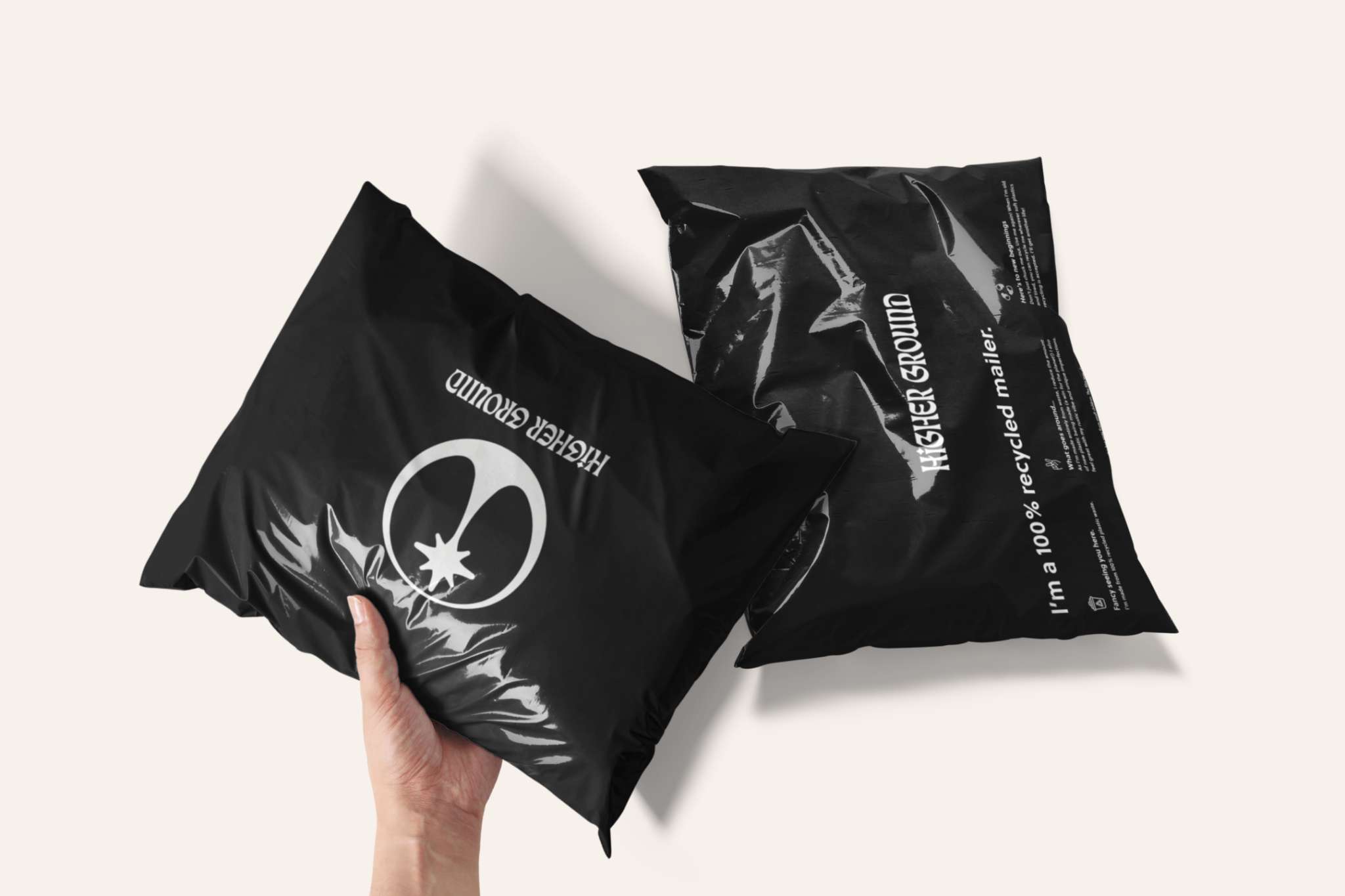Shipping products in polymer bags has many benefits. They are thin, resistant, and often cheaper than other types of packaging. But what happens to these bags after they've been used? Are they recyclable? Let's find out!
What is a poly mailer, and what is it made of?
There are many types of Poly mailers, but they all have one thing in common: they're made of polyethylene. Polyethylene is a plastic used in lots of different applications, including single-use plastic shopping bags and food storage containers.
Polyethylene is a polymer, which means it's made of long chains of molecules. These chains can be either high-density (HDPE) or low-density (LDPE). HDPE makes things like milk jugs and detergent bottles, while LDPE is used for things like plastic bags and shrink wrap.
What are the types of poly mailers?
Virgin, Non-Recyclable Plastic vs. Recycled Plastic
Most Poly mailers are made from virgin plastic, meaning they have never been used before. This type of plastic is not recyclable. On the other hand, recycled plastic is made from consumer waste, such as water bottles or food containers. Recycled plastic can be recycled again and again.
At noissue, we only use recycled plastic to make our Poly mailers. This helps reduce the amount of virgin plastic produced, and it ultimately saves resources and energy. Our top eco-friendly Poly mailers are:
1. Recycled Poly Mailers
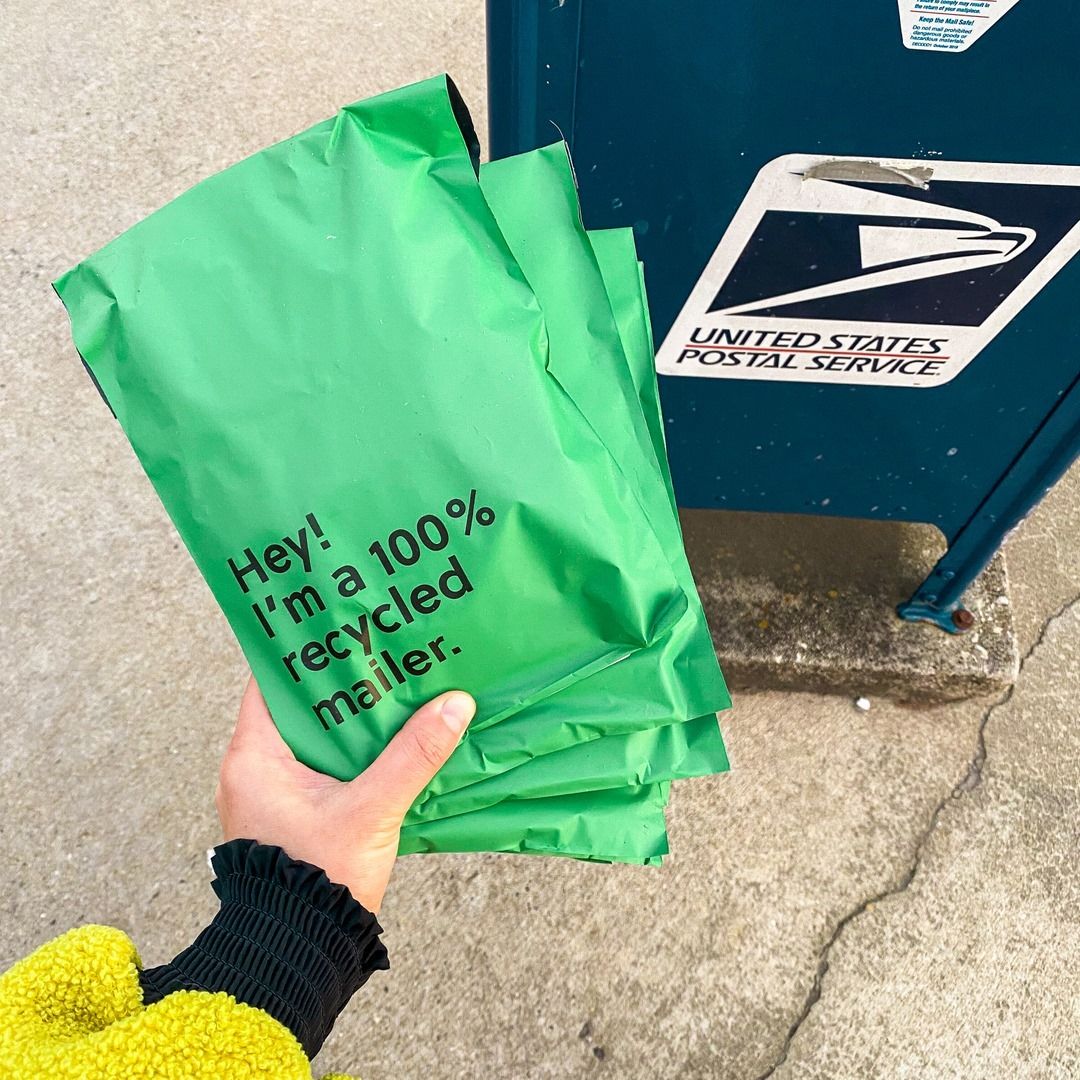
First on our list are our recycled stock and custom poly mailers. With their bright green color, our stock mailers spell out "Hey! I'm a 100% recycled mailer" loud and clear. Indeed, they are made from 100% recycled plastic and can be recycled again after use. These eco mailers are also durable. They'll resist water and tears, and they're even puncture-resistant.
If you want to personalize your brand's poly mailers, look no further than our customizable recycled poly mailers! Display your branding and colors, sustainability instructions, custom QR codes, and more on mailer bags printed in vivid water-based inks that won't affect recyclability or reusability.
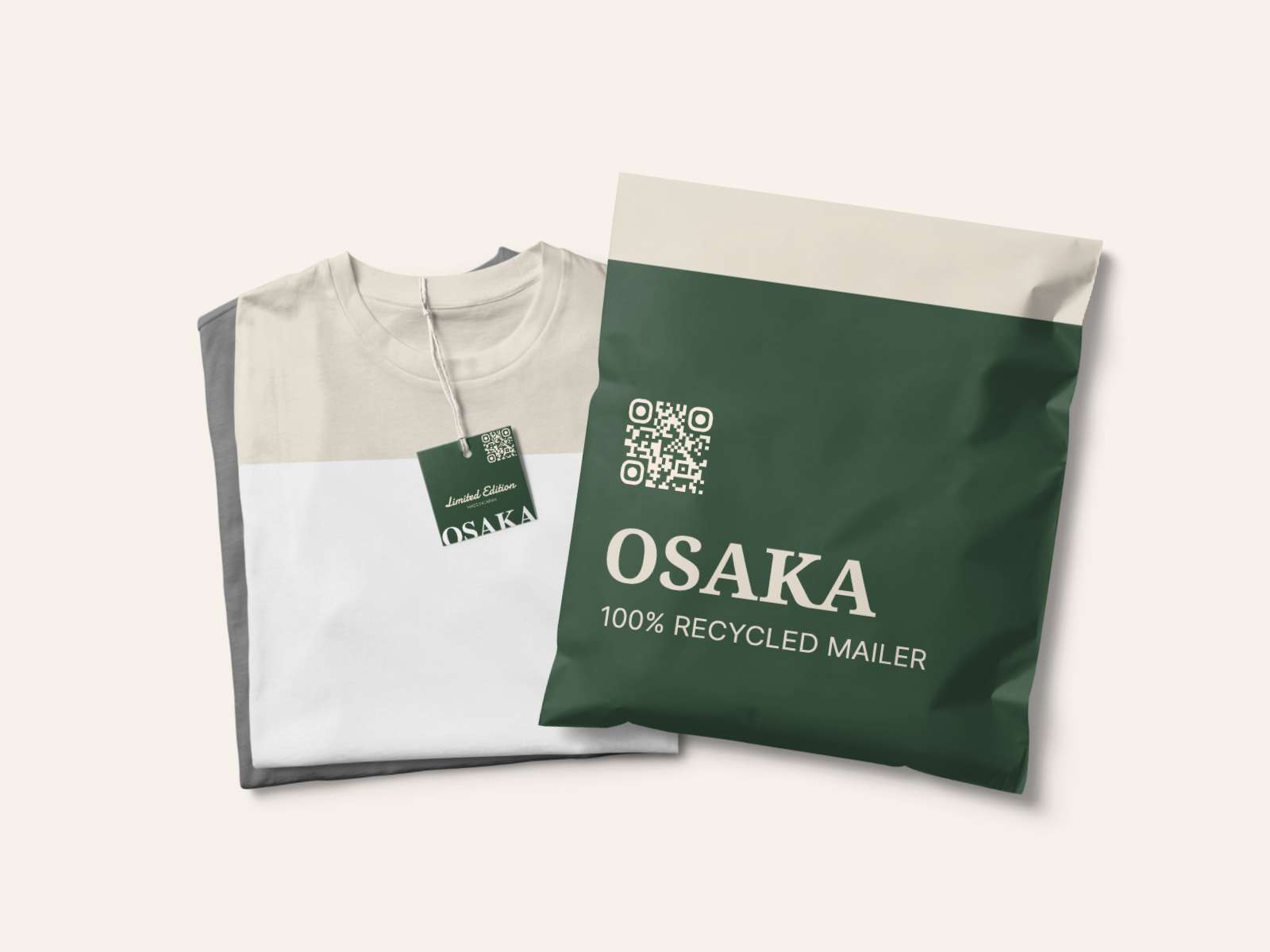
Customers will be impressed by how stylish your mailer bags are that don't skip out on sustainability, either! Recycled custom poly mailers are ideal for budding brands that want to show off their personality and stand out from the crowd.
2. Recycled, Padded Poly Mailers
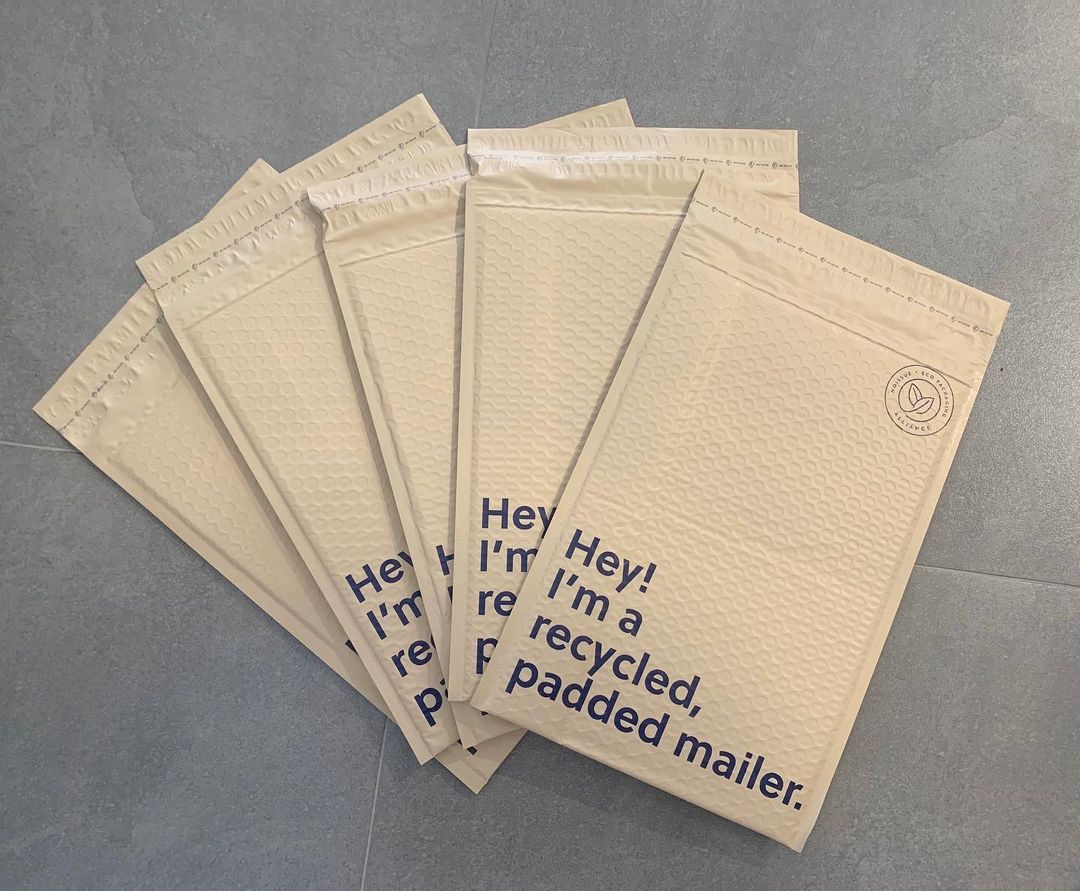
If you're looking for a little extra protection for your products, our recycled, padded poly mailers are a great option. This one reads: "Hey! I'm a recycled, padded mailer" so customers know how to dispose of them correctly at their end-of-life. This mailer offers moderate protection and can withstand light rain and splashes. It's also a great option for products that are vulnerable to scratches, like sunglasses or jewelry.
3. Recycled Stock Poly Mailers

Finally, we have our classic stock recycled Poly mailers. These mailers don't make any grand statements and have a plain cool gray design. They're still made from up to 50% recycled plastic, and you can recycle them again after use.
These are a versatile mailer as they offer good protection against the elements, and they're strong enough to withstand some heavy handling. Plus, you can get creative and design your own custom stickers and labels for them.
The environmental impacts of non-recyclable packaging

You might still be wondering if switching to recycled poly mailers is really worth it. After all, isn't all plastic bad for the environment?
The answer is a little more complicated. Plastic does have a negative environmental impact: the production of virgin plastic (like that used to make traditional virgin plastic Poly mailers) uses a lot of energy. In fact, it takes about twice as much energy to produce virgin plastic as it does to recycle it.
When plastic is produced or incinerated, it releases greenhouse gasses like carbon dioxide and methane into the atmosphere. These gasses contribute to climate change by trapping heat and causing the Earth's temperature to rise.
Virgin plastic is made from petroleum, a non-renewable resource. When we use it we're depleting the Earth's supply of petroleum, and we're not doing anything to replace it.
However, there is a lot of plastic already in circulation that has already been used for milk bottles, plastic bottles and other applications. Rather than sending it to landfill, we can repurpose this plastic and give it a second, third and even fourth use in the form of ecommerce packaging.
This prevents virgin materials from being used and contributes to a circular economy, rather than a take-make-waste model.
Where is single-use plastic disposed of?
Another problem with non-recyclable plastic is that it's often disposed of in landfills. Not everybody recycles their plastic, and even fewer people recycle their poly mailers. So they end up in landfills, where they sit for centuries without decomposing.
How long does single-use plastic take to break down?
Plastic is made to last, which is why its strength has been so useful for packaging. Unfortunately, it also means that it takes a long time to break down. It can take up to 450 years for a plastic bottle to decompose in a landfill.
This is bad news for the environment because it means that all the plastic we've ever produced (since 1907!) is still around in some form. And it's only going to get worse as we continue producing more plastic.
When it finally does break down, plastic releases harmful chemicals into the soil and water. These chemicals can contaminate our food and water supply and cause health problems in humans and animals.
Are Poly mailers recyclable?
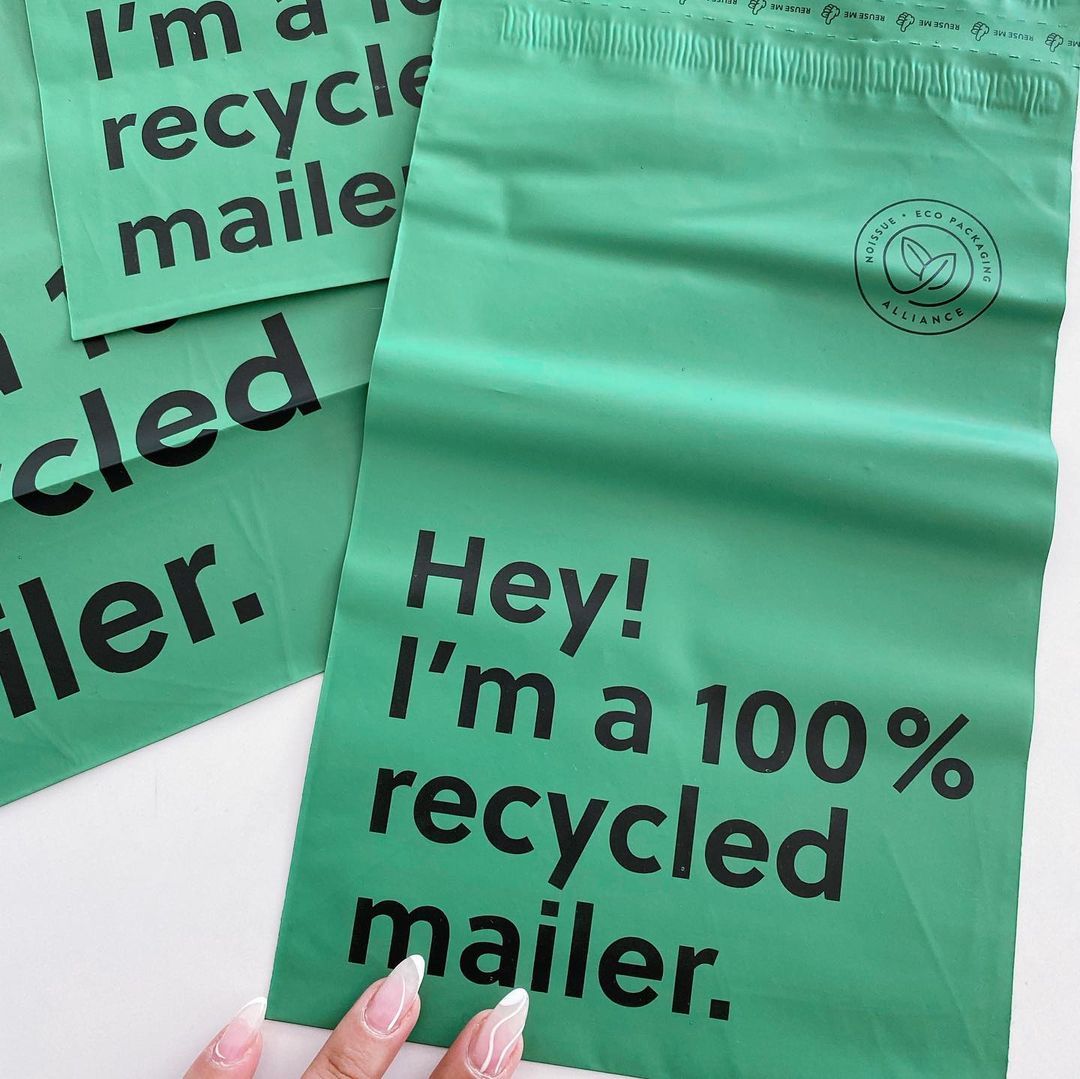
At noissue, we use recycled Poly mailers that are 100% recyclable because we care about the environment. We know that plastic has some negative environmental impacts, but we also know that it doesn't have to be this way.
Recycled mailers vs. recyclable poly mailers
Recycled and recyclable are often used interchangeably, but they have different meanings.
Recycled means that the material has been used before and then recycled into something new. Recyclable means that you can recycle the material, but it hasn't always necessarily been recycled yet.
In the case of noissue, poly mailers are both recycled and recyclable. The plastic they're made from has been recycled into new mailers, and once you're done with them, you can reuse or recycle them.
Are bubble mailers recyclable?
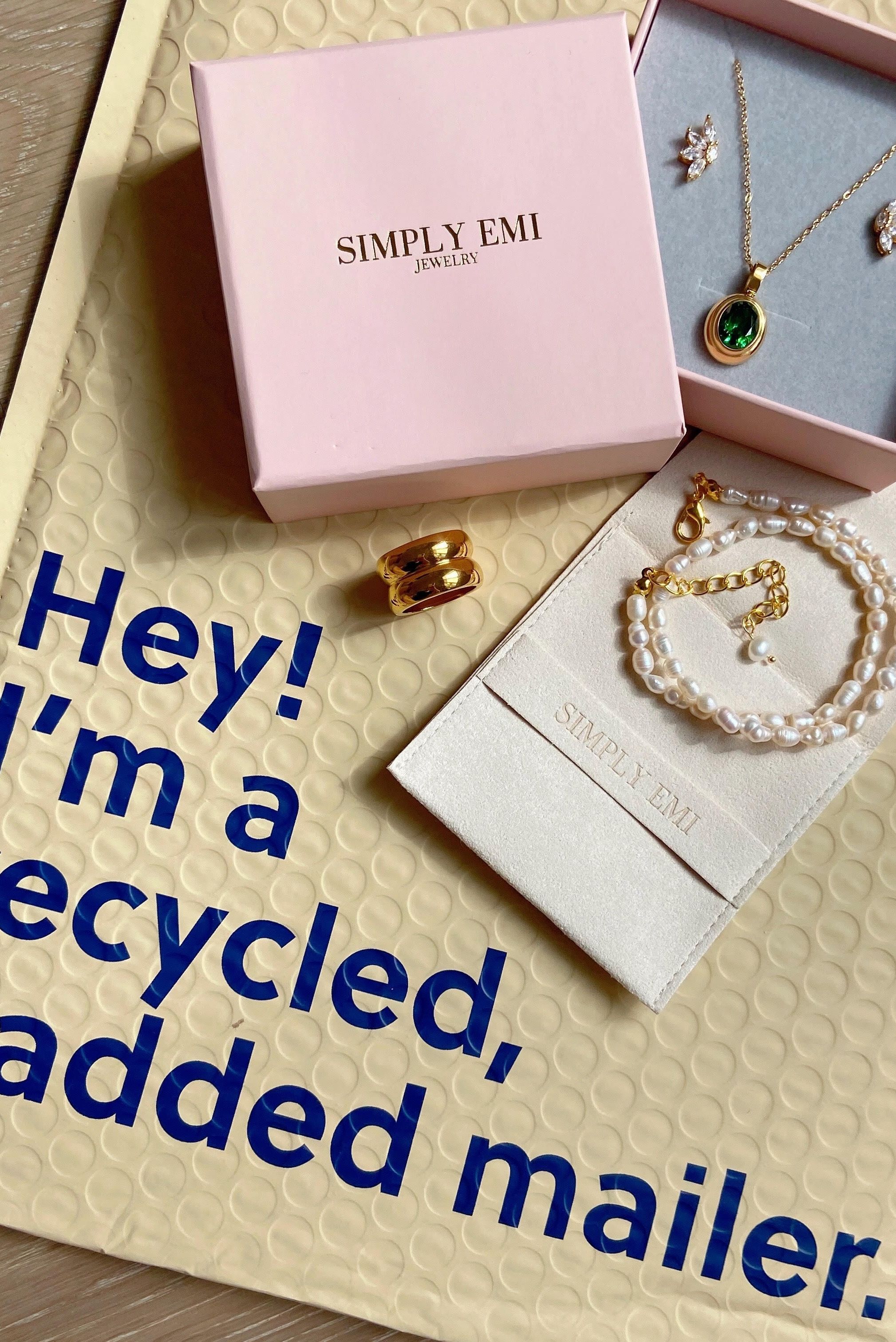
Bubble mailers are usually not recyclable because they're made from multiple layers of different materials. The outer layer is usually plastic, but the inside is lined with paper or foil. These materials can't be separated, so the whole mailer has to go in the trash. Thankfully, noissue's bubble mailers provide a sustainable option as they're recyclable anywhere soft plastics are accepted.
Are Poly mailers reusable?
The vast majority of Poly mailers are single-use only. They're meant to be ripped open and then thrown away.
All of noissue's recycled poly mailers are also reusable
Our reusable poly mailers can live multiple lives before they need to be recycled. An extra adhesive strip on the inside of the flap makes it easy to seal and reseal the mailer, so your customers can use it again after receiving their order.
Reusing poly mailers is a great way to reduce your environmental impact. It takes even less energy and resources to reuse something than to recycle, so it's the best option for the environment.
How to reuse Poly mailers
Reusing poly mailers is easy! Opening the mailer does not damage the plastic, so your customer can safely remove the item. Once the item is removed, the customer can seal the mailer with the double adhesive and use it again.
If your customer doesn't need to reuse the mailer, they can recycle it. All of noissue's eco-friendly mailers are recyclable, so they can be disposed of in your customer's recycling bin or anywhere soft plastics are recycled.
Make a positive change today
At noissue, we care about the environment. We use recycled materials in all our products, and we offset carbon emissions with every order through the Eco-Alliance. Now, you can make a positive change for the environment too!
Check out our range of stock and custom eco-friendly Poly mailers today and get started in reducing your environmental impact with shipping.
